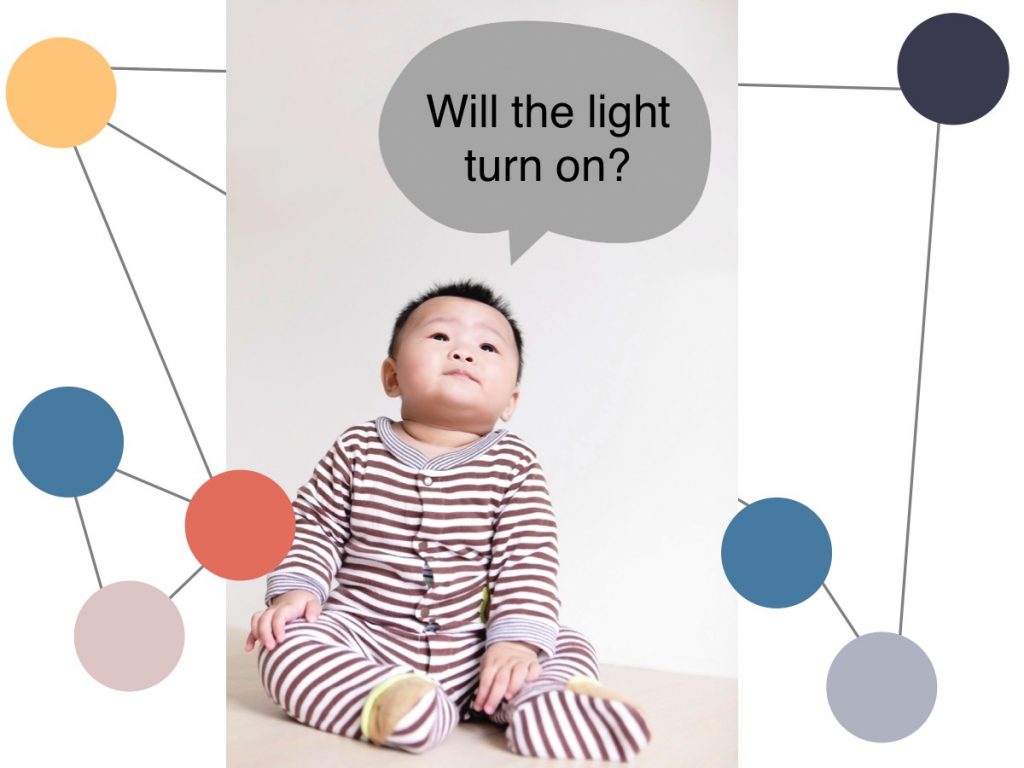
How do we know when a child is actually learning about cause-and-effect? Children love to imitate adults. A child might copy actions they’ve seen others do to engage those people socially or to be more like them. For example, a child might press the same buttons the adult presses or wear the mom’s necklace. In these cases, the child is duplicating what the adult does but they aren’t necessarily learning a cause-and-effect. In one study, 14-month-old babies watched an experimenter touch his head to a box. When his head touched the box, it lit up. When the baby got a chance to play with the box, she also touched her head to it. Was she simply copying the adult’s novel behavior or perhaps doing this action to see what the experimenter’s reaction would be? Or was she instead learning about cause-and-effect. Was she running her own experiment to test out whether touching her own head to the light would cause it to turn on? This kind of action, testing the cause-and-effect relation between two events, is called an intervention. When children take action to perform an intervention like this, we know that they are learning about cause-and-effect.
-
- Intervention
- an action taken on something with the goal of bringing about an effect
- Spatial contact
- when two or more objects touch each other